Hong Kong
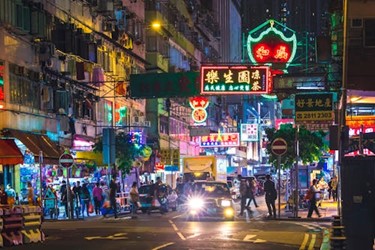
Travel Advice for Seniors: Hong Kong
We were fortunate to visit Hong Kong in the Fall of 2010. At that time, Hong Kong was in the process of returning to China per a long-ago agreement with England that expired in 1997. China has moved forward with a “One City/Two Systems” program since, but we are due up to revisit to find out how much has changed.
Hong Kong is one of those international cities that you just never know what new form of excitement is around the corner. We loved the international-ness of the downtown and Kowloon and the foreignness and Asian-ness of the Market areas. Hong Kong has something for everyone.
Hong Kong is centered around Victoria bay. The Kowloon part is on the mainland side and island side is on Hong Kong Island. Most people stay on the Kowloon side as it has more tourist friendly attractions. It used to be referred to as two different cities, but now it is all just one city, Hong Kong.
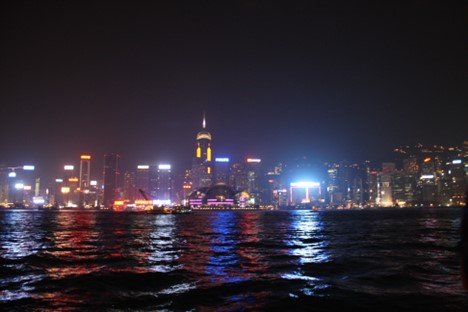
We arrived Hong Kong from Guilin, China after spending four weeks in China. We went straight for the California Pizza Kitchen! The food in China was somewhat difficult to appreciate, especially in outlying villages. I went vegetarian and was sometimes served what looked like a plate of grass and probably was! The fish was good, but small and boney. Needless to say, we were delighted to see our favorite international restaurants in Hong Kong!
And so much to do! We began our tour by walking around the central city area and visiting the Hong Kong Museum of Art. The Museum houses contemporary art works from Chinese and local Hong Kong artists and Chinese antiquities. It is located on the waterfront and provides a nice view. Accessible walkways, parking, entrances, restrooms and provisions for hearing and visually impaired.
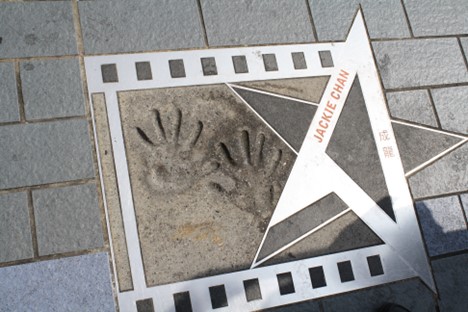
Adjacent to the Museum is the popular Avenue of Stars, similar to the Hollywood Walk of Fame. Watch for the statue of local legend, Bruce Lee. The Star Ferry pier is right next to these sights and travels back and forth across Victoria Bay. We took it across to visit the Chinese Arts and Crafts Shop which sells traditional Chinese artwork and crafts. We then walked around the waterfront on the other side of the bay before taking the ferry back to the other side for a nice orientation.
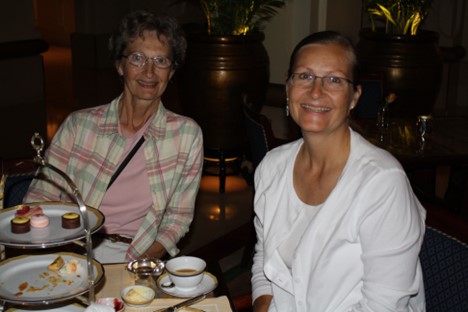
Later in the day we stopped by the famous Peninsula Hotel for tea. The Peninsula is a very popular “see and be seen” hotel, and yes, they do have a fleet of Rolls Royces for their well-to-do guests. The tearoom in the Lobby was airy and alive with potted palms. It was a swish experience and while not inexpensive, it is definitely a “trip treat”. The hotel has accessible walkways, parking, entrance and rooms.
Next day we took the Peak Tram funicular on Hong Kong Island to Victoria Peak for a magnificent view of the city and a walk around Hong Kong Park. The funicular rises about 1300 feet for a steep ride up the mountain.
While in the area we visited the Flagstaff House, home to the British Command during colonial times. It was built in 1846 and is of western-style architecture. It is located in Hong Kong Park and houses a nice collection of tea ware. Accessible entrance and restrooms.
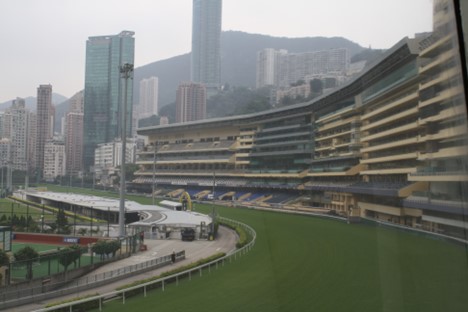
Next up was a walk over to the Happy Valley Horseracing track and the Hong Kong Jockey Club. Gambling is incredibly popular in Hong Kong and the Chinese are crazy for it. The horse races weren’t going on the day we visited, but we were able to see the racetrack which is right in the middle of the city and visit the interesting museum. The track is accessible.
That night we went to Serenade for dim sum, a delicious Chinese specialty with a Hong Kong twist.
Third day was an exploration of Kowloon. We began in Tsim Sha Tsui area, which is a tourist area good for shopping and nightlife. Several restaurants are in this area and also on the neon-lit Nathan Road which is a main artery. The luxe malls are nearby on Canton Road.
The Hong Kong Museum of History was our next stop. The Museum explores Hong Kong’s cultural and natural history and is an interesting one-two hour diversion. Accessible parking, entrance and elevators.
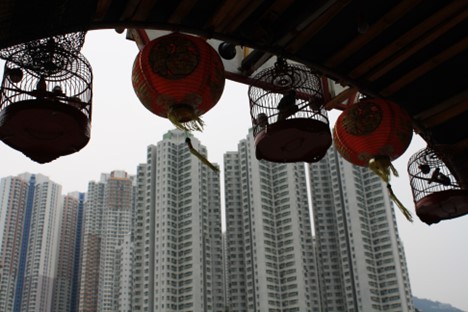
We spent the afternoon wandering around the various market streets in Hong Kong. Li Yuen Street is a pedestrian street lined with shops and stalls selling a wide range of goods such as watches, clothes and shoes. Be aware that most of the items for sale are likely counterfeit even though they may look like the real thing. Also, you are expected to bargain so be prepared to offer about half of the mentioned price and then determine how much you want to pay for the item and bargain further. Do not be afraid to walk away if the price is not coming down as many vendors will offer further discounts if they feel they are losing a sale.
Also of shopping interest is Hollywood Road, one of the oldest streets in Hong Kong and famous for its antique shops and galleries selling contemporary Chinese art.
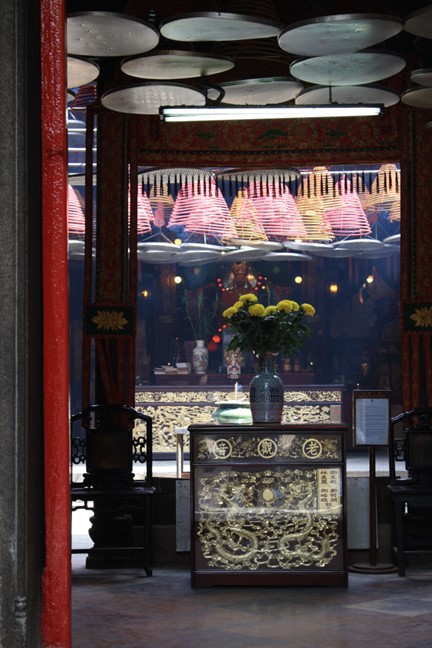
Our final stop was the Man Mo Temple, temple to the god of Literature (Man) and the God of War (Mo), built 1847 and 1862. It doesn’t take long to see but is a beautiful structure and worth a quick look. Not accessible.
We later went to the Temple Street Night Market, which begins at 2pm but doesn’t really get ramped up until later in the evening. It is a wonderfully festive atmosphere with its many restaurants, street food stalls and open-air stalls selling trinkets, cheap electronics and clothes. If you want to buy high quality items this isn’t really the place to go, it’s rather about the experience.
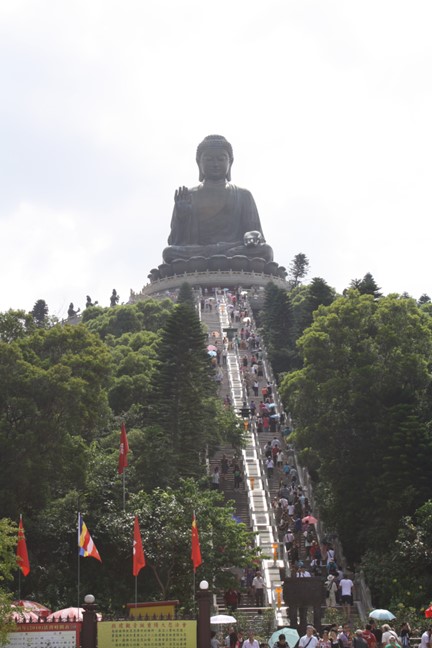
Our final day was a visit to Lantau Island to visit the giant Buddha. Lantau Island is the largest of Hong Kong’s islands and you can count on beautiful views from the top of the mountains. The main attraction is the Giant Buddha, Tian Tan. You can take the Ngong Ping 360 cable car up to see the Buddha, which is totally worth it just for the views (you may have to wait in line a bit to take it). And it is 268 steps to reach the Buddha, though the site also has a vehicular lift to the top for those who’d prefer it. The Buddha’s right hand is raised representing protection, while the left rests open on his lap in a gesture of generosity.Not generally accessible.
We could’ve spent weeks in Hong Kong exploring, but we were headed to Kuala Lumpur in Malaysia, our next and last stop.
Where we stayed: Regal Kowloon Hotel. Accessible parking, entrance and common areas.
How we got there: Flight from Guilin to Hong Kong.This was part of a five-and-a-half week private tour through China and Malaysia.
General Accessibility Information: See notes above. Most large cities are somewhat accessible, particularly hotels, some transportation and some major sights. Outside of the major cities, accessibility is generally less frequent to find. Also, be prepared for curious onlookers. Call in advance to verify and make specialty arrangements.See our sections on specialty apps and accessible travel for more on accessibility assistance.

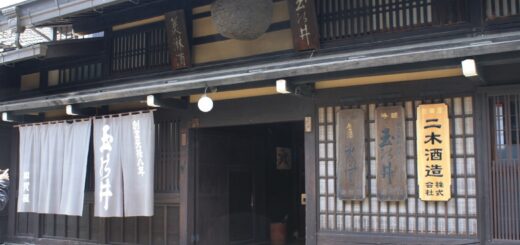
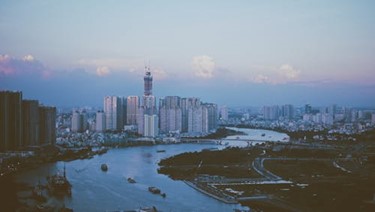
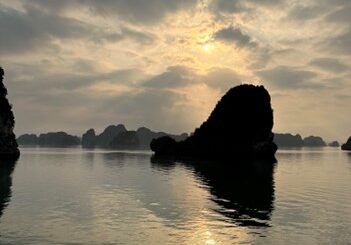
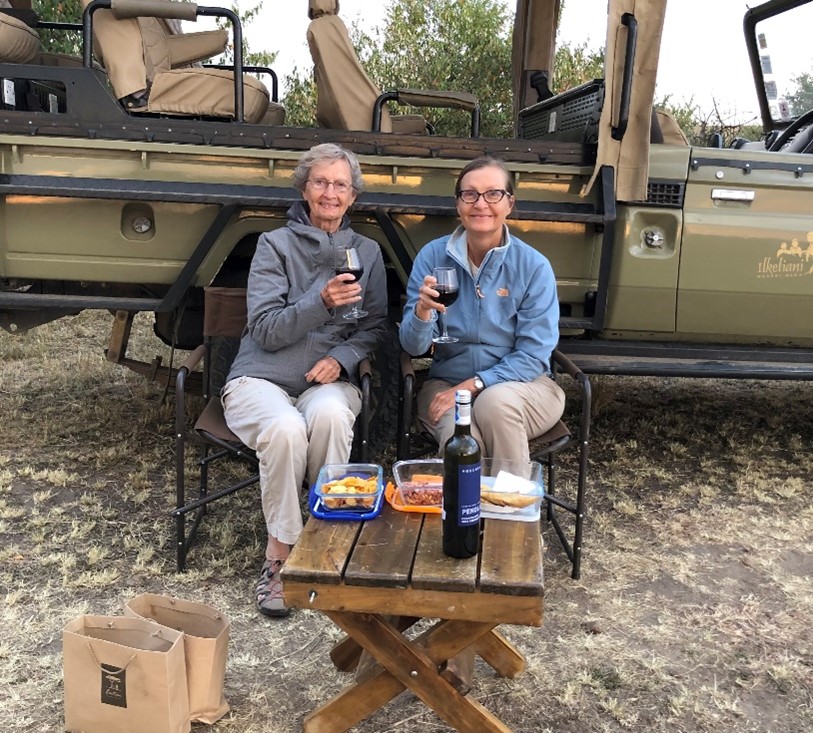
Some truly fantastic information, Glad I found this.